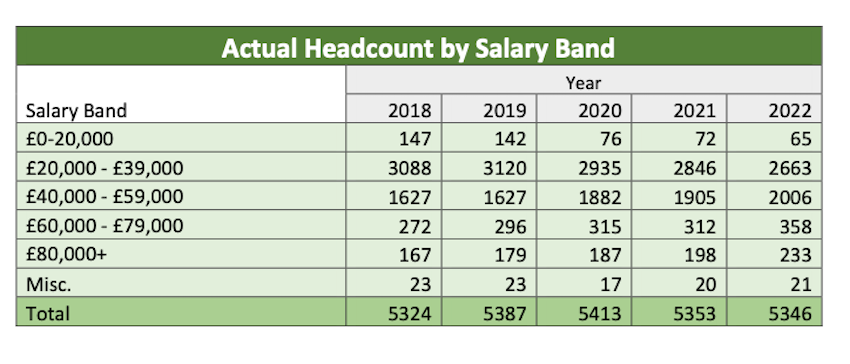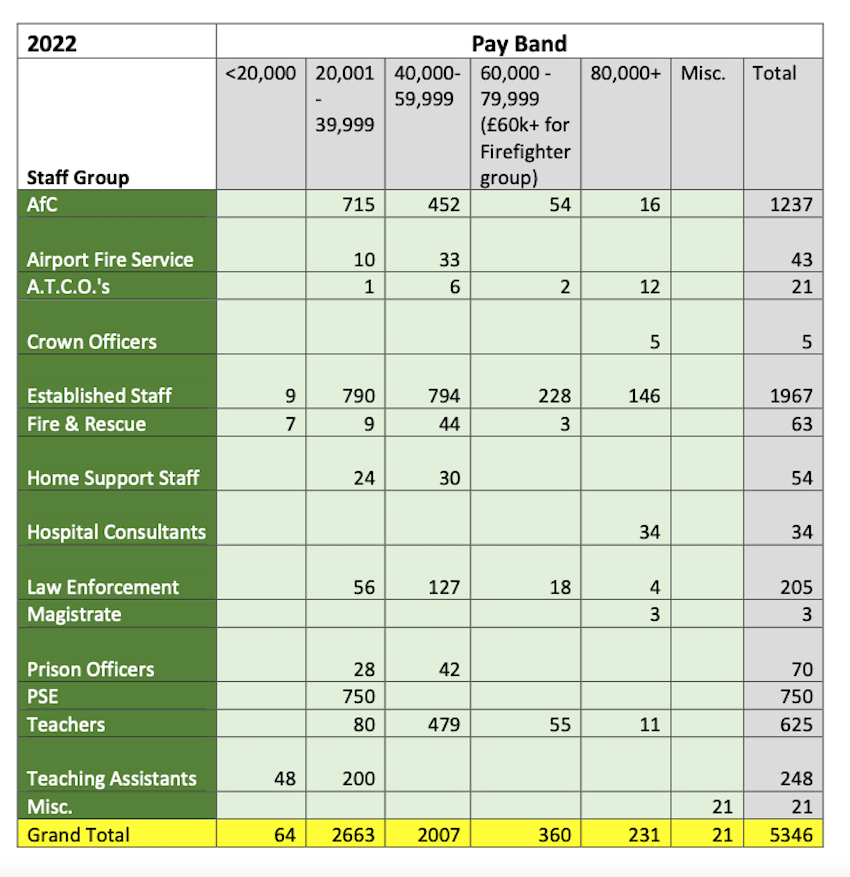


Nearly half of people employed in the public sector are now earning more than £40,000 a year - up from less than 40% five years ago.
Figures compiled by the States after a request from Express earlier this year, show that a leap in the £40,000 to £49,000 pay bracket during the pandemic has been sustained in the following years as overall employment numbers subsided.
Overall, the headcount for all establishment roles has increased by just less than 2% between 2018 and 2022 - from 5,324 to 5,346.
This is nearly all in health care which the States says “reflects the growing demand which is driven by older people making up a greater percentage of the population”.
The growth in public sector numbers appears to contrast well with Jersey, where between 2018 and 2022 the staff headcount grew from 7,012 to 8,127.
“In terms of salary levels it should be noted that pay increases are informed to an extent by inflation which has increased 19% over the period of these statistics and this will account for some of the growth within the individual pay bands,” a States spokesperson said.

There are now 233 people in Guernsey’s public sector earning more than £80,000 a year, up from 167 in 2018.
The rise in the £60,000 to £79,000 bracket was from 272 to 358 and £40,000 to £59,000 was from 1,627 to 2,006.
The lower salary band numbers fell.
In 2018, 3,088 people were paid between £20,000 and £39,000 which had fallen to 2,663 by 2022, while those paid up to £20,000 shrunk from 147 to 65.
These costs are all budgeted costs and do not include allowances, overtime pay or agency workers.
Employment numbers in the five year period were highest in 2020 at 5,413.
“A higher number of roles during the pandemic is reflected in these figures, as there was a need for additional staff in areas such as the testing programme, contact tracing, the vaccine roll-out and helplines.”
This was also the period where there was a noticeable rise of her percentage of staff now in the £40,000 to £59,000 pay band which never fell back.
It went from 30.2% in 2019 to 34.8% in 2020, 35.6% in 2021 and 37.5% in 2022 as the number in the lower bracket fell in line with those.
Pay by staff groups


The States provided a breakdown of pay by staff groups.
The Agenda for Change Group includes nurses and midwives. In 2018 there were 1,061 staff in this sector, that had risen to 1,237 by 2022.
The largest pay group of the traces is the Established staff, which includes civil servants, social workers and customs officers.
This group has the highest number of top paid workers.
In 2018 there were 2,037 people employed as established staff, and 97 earned more than £87,000, a further 188 were in the £60,000 to £79,000 bracket and 662 between £40,000 and £59,999.
By 2022 the total number had fallen to 1,967.
Highest earners were up by 49 to 146 and those in the £60,000 to £79,000 bracket rose by 40 to 228 and the numbers paid between £40,000 and £59,999 rose by 132 to 794.
Comments
Comments on this story express the views of the commentator only, not Bailiwick Publishing. We are unable to guarantee the accuracy of any of those comments.